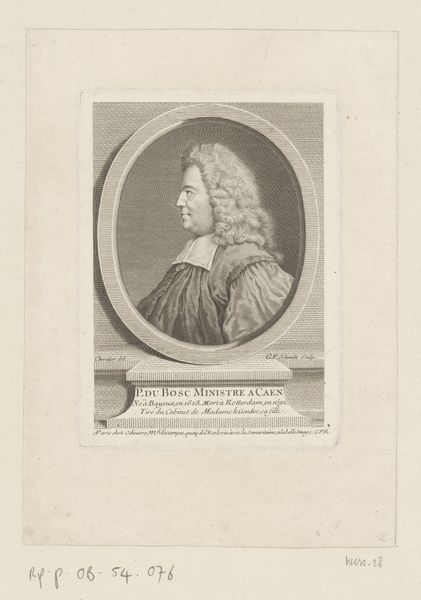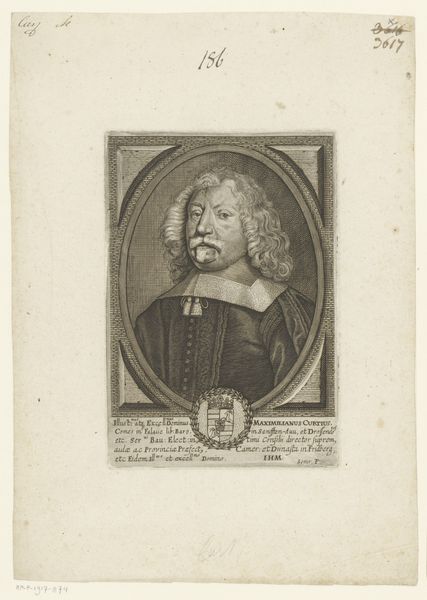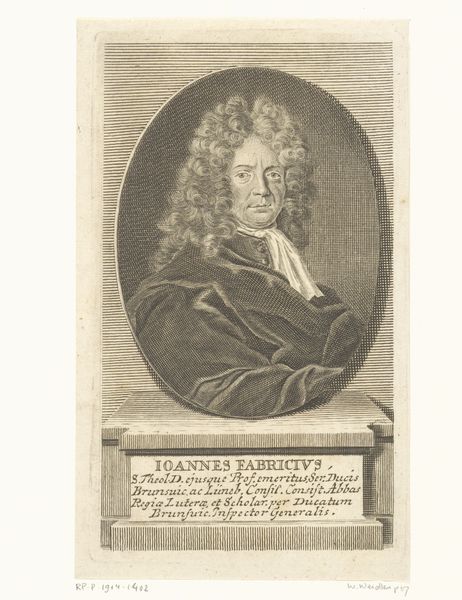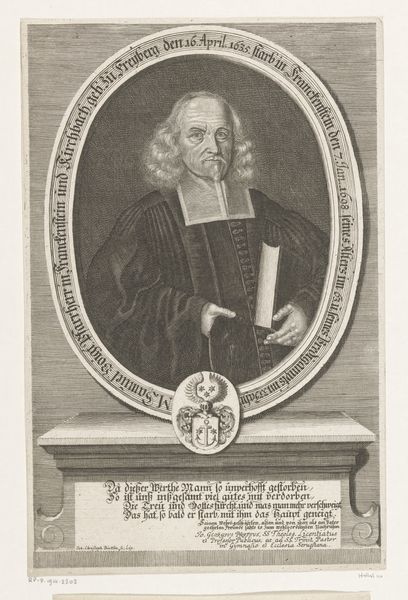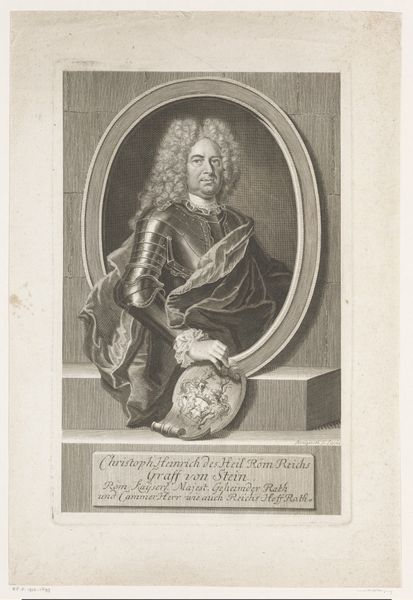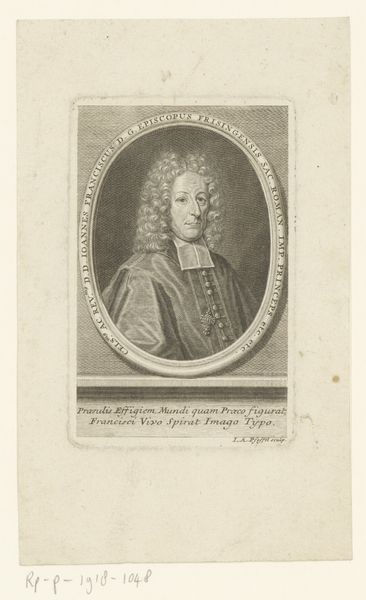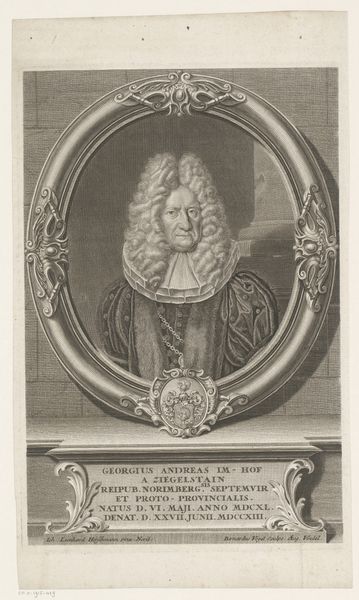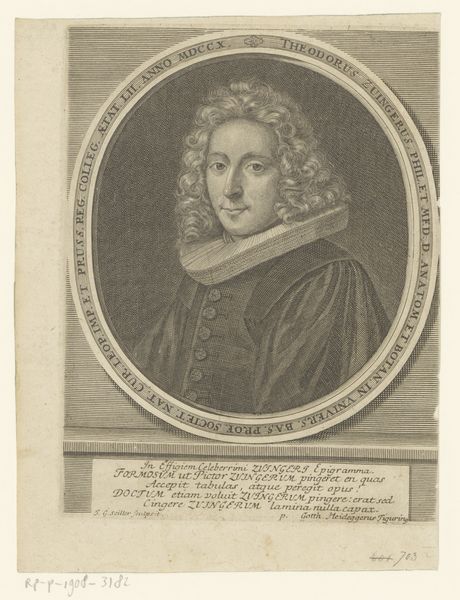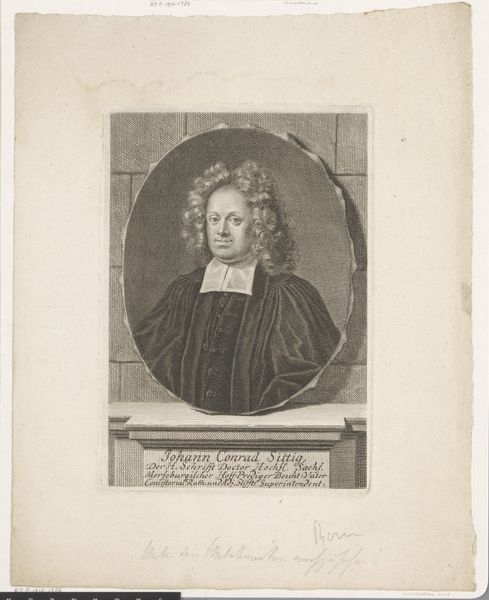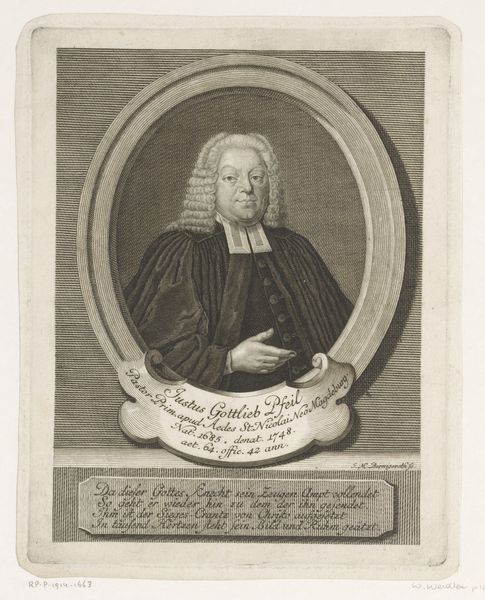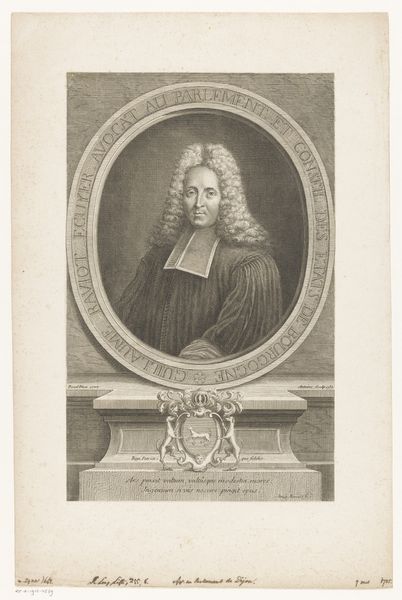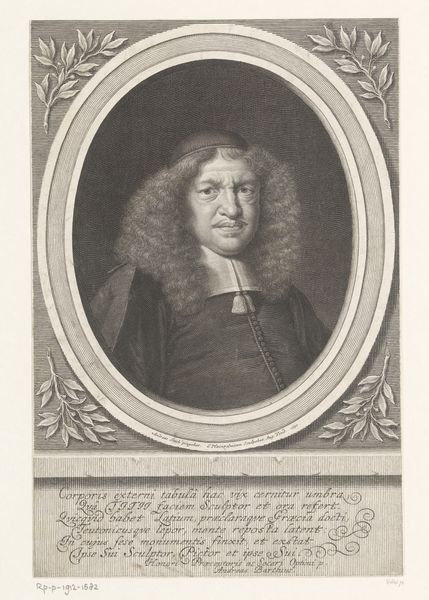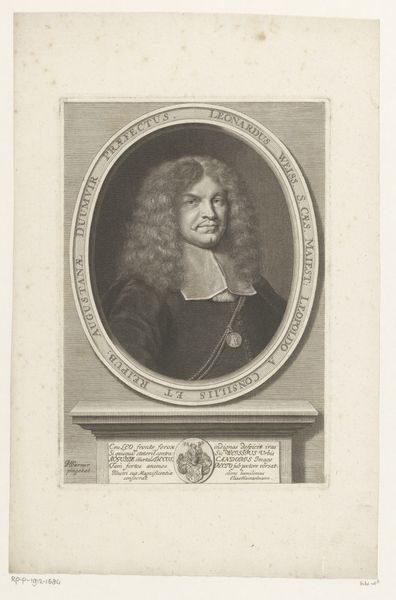
engraving
#
portrait
#
baroque
#
history-painting
#
engraving
Dimensions: height 221 mm, width 168 mm
Copyright: Rijks Museum: Open Domain
Curator: Before us, we have Johann Martin Lerch’s engraving, "Portret van Maximilian Curtz," created in 1659, residing here at the Rijksmuseum. Editor: My first impression is one of controlled intensity. The oval frame constrains the wildness of his hair, his direct gaze seems to lock onto the viewer. It has an unsettling formality to it, despite the… fleshy nature of the subject. Curator: Indeed, the engraving medium itself speaks to this formality. The minute detail achieved through the delicate lines provides an almost clinical exactness, yet portraits like these were essential in conveying power and status in the Baroque period. Editor: Absolutely. The dark lines and carefully constructed hatching give volume to his features, even conveying texture—look at the almost tangible quality of his lace collar and opulent gown. The semiotics here shout wealth and position. But… what about that tongue? Curator: Ah, yes! The tongue presents a fascinating rupture in this otherwise rigid portrayal. The slightly mocking expression— sticking out the tongue— challenges the norms of aristocratic portraiture. It introduces an element of humanity, and possibly even political commentary. Could it be a subversive detail, given Curtz’s role as minister to the Elector of Bavaria? Editor: Subversive, perhaps. Or maybe a flourish. What about its form, and contrast? The soft flesh of the tongue contrasts so violently with the calculated and stiff texture throughout the work. He doesn’t simply command our attention; he demands our emotional response through calculated asymmetry. Curator: It is true, though— the overt display creates a kind of intimacy. It also undermines the expected stoicism. Lerch provides us not only a portrayal of power, but hints to a certain individual presence too. Editor: Lerch gives the viewer more than an official depiction. He captures… contradiction in the formal language of Baroque printmaking. It really disrupts any reading as pure historical document. Curator: Precisely. And for me, this contrast enhances the power of the piece – the personal challenges against expectations and norms in surprising ways. Editor: Definitely a work to be contemplated, then—both as a crafted object and a glimpse into a distant character.
Comments
No comments
Be the first to comment and join the conversation on the ultimate creative platform.
